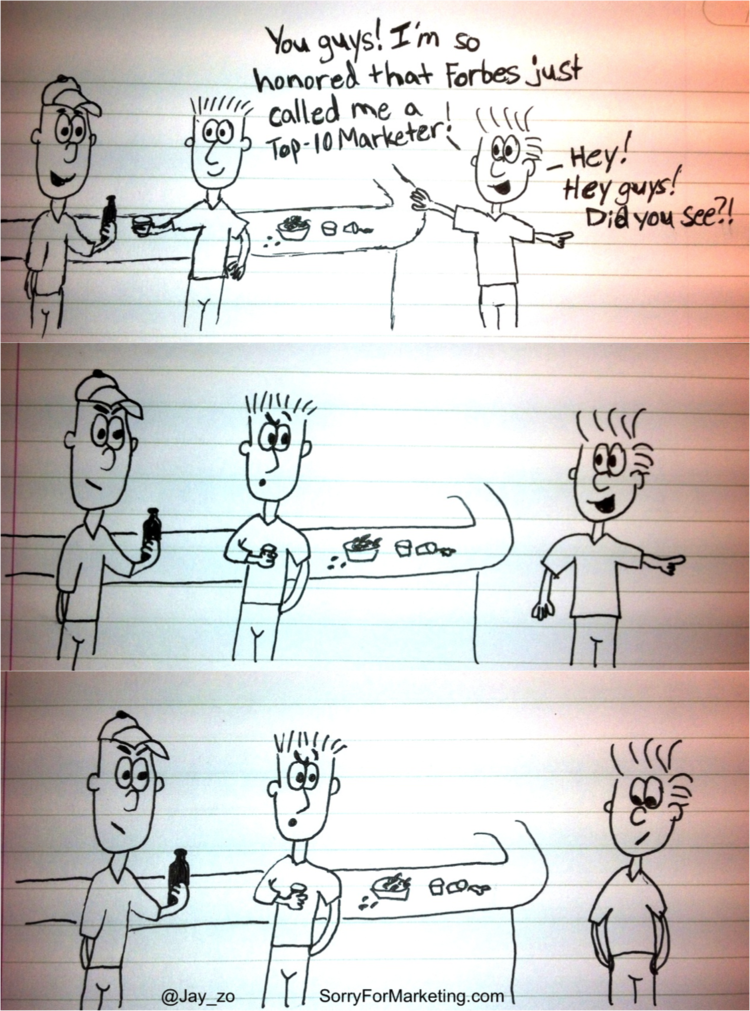Topics:
Marketing StrategySubscribe now and get the latest podcast releases delivered straight to your inbox.
 One of the most common misconceptions about content marketing is that it simply boils down to one thing - writing blogs.
One of the most common misconceptions about content marketing is that it simply boils down to one thing - writing blogs.
However, while blog content certainly plays an instrumental role in the development of a content marketing strategy, it's important that marketers realize that there are plenty of other fish to fry.
Rather than stick to the same old song and dance, they need to be willing to explore new ground if they'd like to see their efforts gain recognition.
Don't know where to start?
To help inspire your efforts, we've detailed 3 unique pieces of content that you can create to keep your blog articles company (and start driving even more traffic back to your website.)
Cartoons
I'm going to bet that if you watched the Super Bowl, you remember the Mountain Dew commercial with the dancing dog, dancing recliner, dancing mounted deer, and well, dancing everything.
Why? Because it was funny. Like really funny.
According to a University of Houston study from Zhanf and Zinkhan, including humor in an advertisement increased the message recall and had a positive effect on brand attitude.
Considering we tend to buy from people that we like, fusing marketing and humor serves a way to form positive relationships with potential customers.
We've found that cartoons serve as an effective avenue for marketers looking to establish trust and likeability.
With that said, check out this awesome example from Jay Acunzo's article, "All The Weird Things Business People Do On Twitter."
Weird Thing #3: Retweeting And Sharing Content To Your Followers That Overtly Compliments You

Acunzo uses relatable, hand-drawn cartoons alongside written content to create a highly engaging piece of content.
It's unique. It's playful. It's worth sharing.
Infographics
Okay, okay, so maybe you have thought to try your luck at infographics already, but what about interactive ones?
First, let's start by exploring why infographics are so effective with the help of this infographic. (Yea, I said it, an interactive infographic on the effectiveness of infographics. Mindblowing.)

*Click here to view the entire infographic in action.*
Pretty cool, right?
Now let's take a closer look at some of the key takeaways here:
1) We are visually wired
- Almost 50% of your brain is involved in visual processing.
- 70% of all your sensory receptors are in your eyes.
- We can get the sense of a visual scene in less than 1/10 of a second.
2) Infographics help because we suffer from information overload.
- We receive 5x as much information today as we did in 1986.
-
34 gigabytes or 100,500 words = the amount of information we consume outside of work on an average day.
-
On average users only read 28% of words per visit.
3) Infographics counter information overload because they're more engaging, accessible, persuasive, and easier to recall.
- Researchers found that colour visuals increase the willingness to read by 80%.
- People following directions with text and illustrations do 323% better than people following directions without illustrations.
- A study conducted at the Wharton School of Business found that 50% of the audience were persuaded by a purely verbal presentation and 67% of the audience were persuaded by the verbal presentation that had accompanying visuals.
- People recall 80% of what they see and do, but just 20% of what they read.
While it's clear that visual content serves as an effective learning tool, adding an interactive element works to facilitate an even greater experience aimed at increasing engagement and information retention.
For another inspiring example of an interactive infographic in action, check out Yottaa's Ecommerce Application Performance Checklist.
Podcasts
By now, everyone and their mother has at least heard of the Serial podcast in passing. Am I right?
This wildly popular podcast chronicles the investigation of the 1999 murder of an 18-year-old student, Hae Min Lee, and has reportedly been downloaded more than 68 million times since its release in October 2014.
The driving force behind its success? Word of mouth.
In the past few months I've overheard people discussing this particular podcast at the grocery store, in the office, at the nail salon, over coffee, at the bar...need I say more?
The lesson to be learned is that while many markers have overlooked the power of podcasts, perhaps it is a content form worth exploring.
In fact, we see podcasts as a way for marketers to establish a deeper form of engagement with their audience that the written word simply can't accomplish.
The recorded audio format provides an opportunity for businesses to highlight their personality, humanize their brand, and put forth a piece of highly engaging educational material.
Interested but don't know where to start?
If you just want to get your feet wet, consider reaching out to someone in your industry that already has an established podcast. Starting by being featured on someone else's channel will help you get familiar with the process and gain a bit of exposure.
Need inspiration?
Check out HubSpot's new podcast, The Growth Show, run by their CMO, Mike Volpe.
Each week Volpe (or another HubSpotter) sits down with a guest known for their remarkable growth, and they talk shop. Recent episodes have included brilliant minds such as Guy Kawasaki and Jeff Rosenblum.


Order Your Copy of Marcus Sheridan's New Book — Endless Customers!

